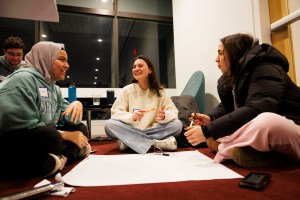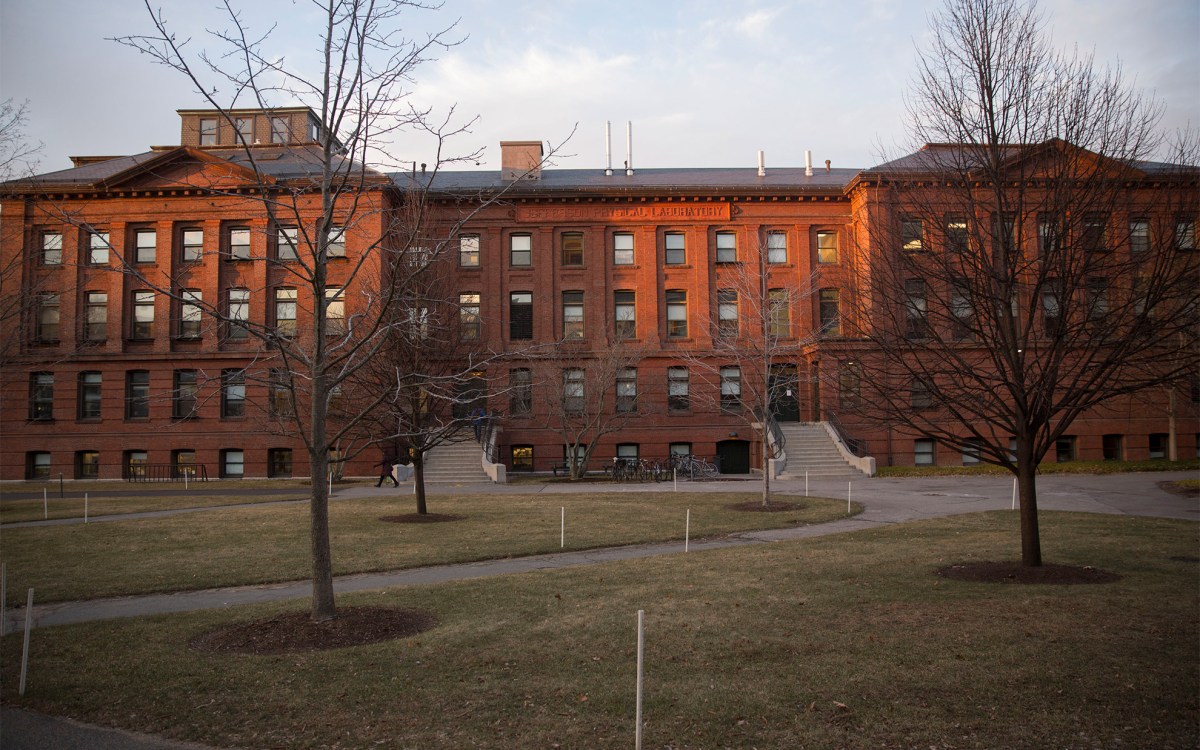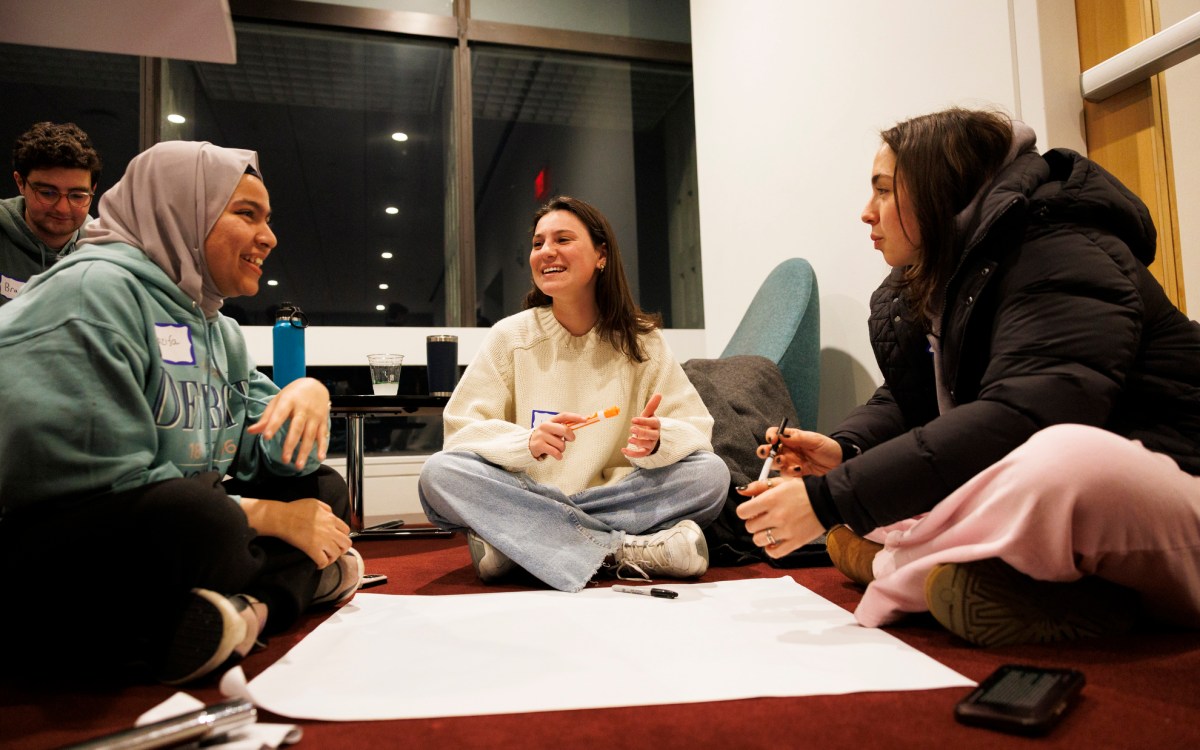Uncovering ‘hidden curriculum’ for those historically on outside
Quantum Noir fosters sense of community among individuals of color interested or involved in quantum science, nanoscience, engineering
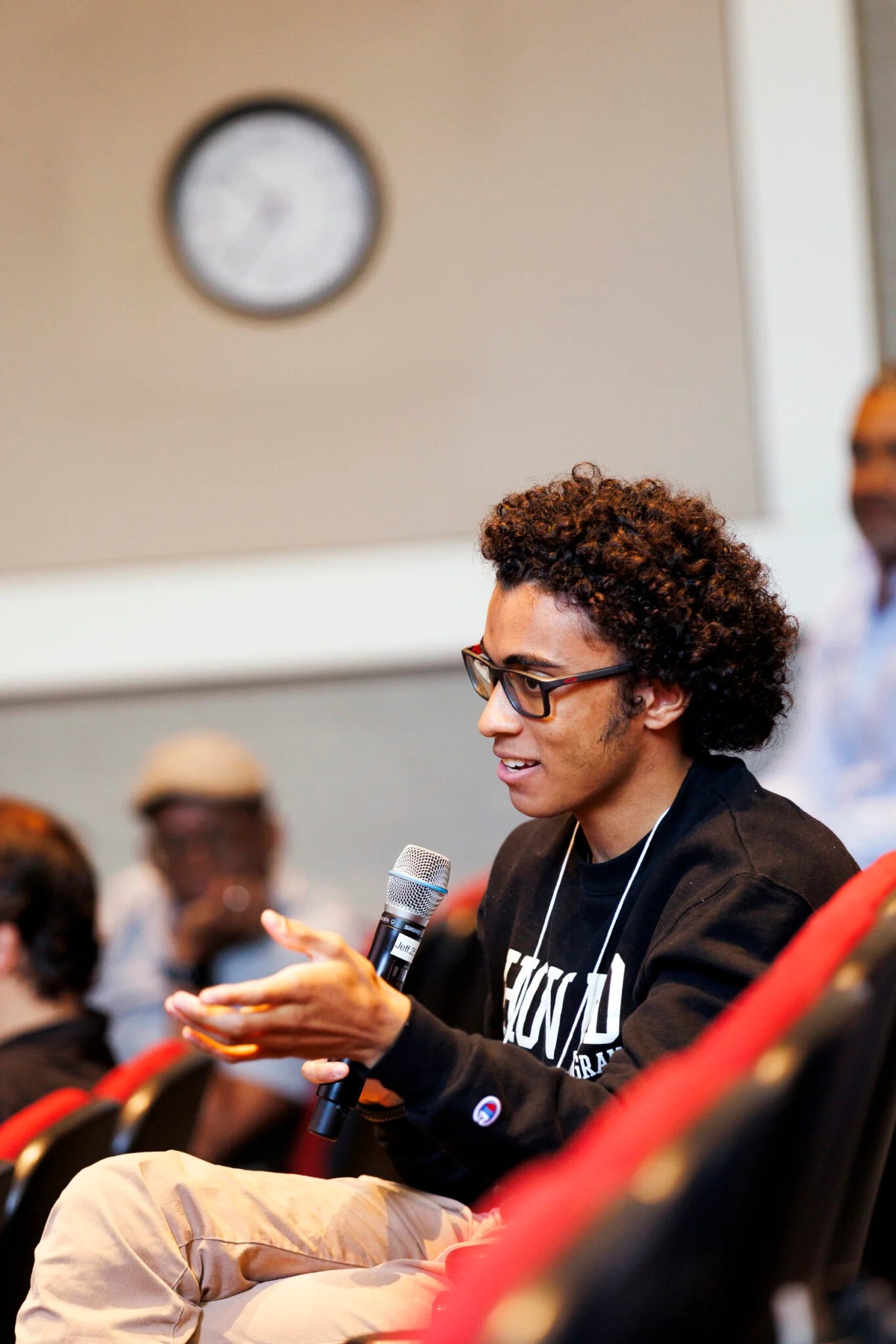
Howard computer engineering major Malcolm Bogroff asks a question at the Quantum Noir conference held earlier this month at Harvard.
Photos by Stephanie Mitchell/Harvard Staff Photographer
Jada Emodogo arrived at the recent Quantum Noir conference knowing no one.
The incoming Harvard Quantum Initiative graduate student already knew she had an interest in the field. But that wasn’t the same as feeling there may be a place for her in it.
“Being able to congregate with different professionals in the field gives me hope for the future, and it really affirms that what I want to do, and what I’m able to do, is right here,” she said.
Emodogo, a recent Jackson State University graduate, was among more than 100 attendees of the inaugural Quantum Noir conference at Harvard on June 11-14, a quantum science and engineering event aimed at students and scientists of color. Faculty at Harvard, MIT, Princeton, Dartmouth, and many other colleges led sessions that blended overviews of the latest advances in quantum science with non-technical subjects such as entrepreneurship, venture capital, and how to navigate spaces in the field as an underrepresented minority.
The initiative was the brainchild of William Wilson, executive director of Harvard’s Center for Nanoscale Systems. A longtime supporter of the Conference for African-American Researchers in the Mathematical Sciences, Wilson dreamt for years of creating a similar event for nanoscale and quantum physics.
“This really was a missing link, in the sense that we’re not educating students in this space … and we’re letting that talent go do something else. We’re letting that talent go work on satellites, as opposed to working on semiconductors,” Wilson said.
With support from the National Science Foundation, Wilson and colleagues launched Quantum Noir to create a community of researchers, innovators, and students of color interested or involved in quantum science, nanoscience, and engineering. Organizers hope to create a “more inclusive future” for the field by training the best and most diverse set of minds to conquer its hardest problems — from networking hardware to algorithm development.
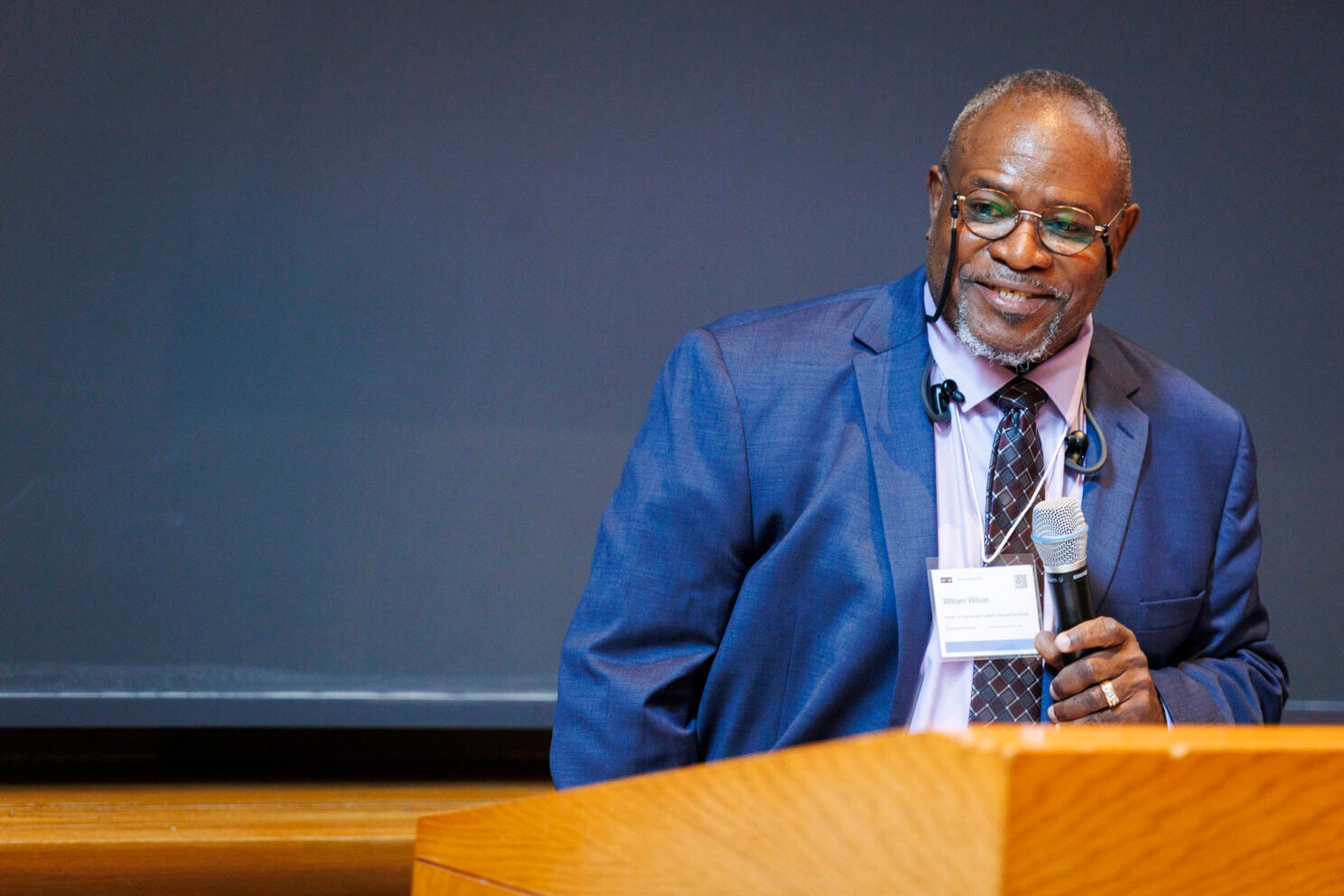
William Wilson, who led the drive to launch Quantum Noir, opens the conference.
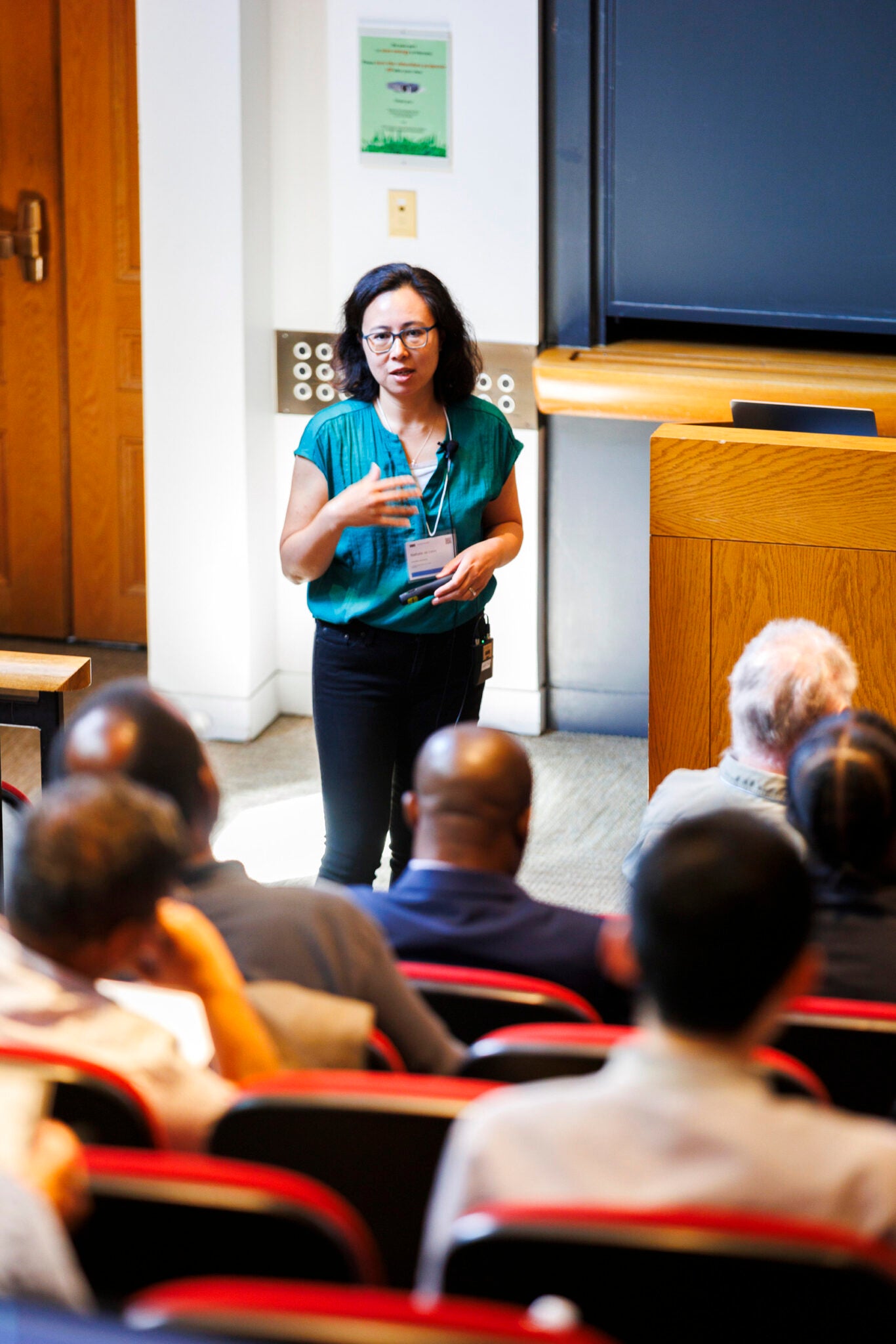
Nathalie de Leon, Associate Professor of Electrical and Computer Engineering, Princeton University.
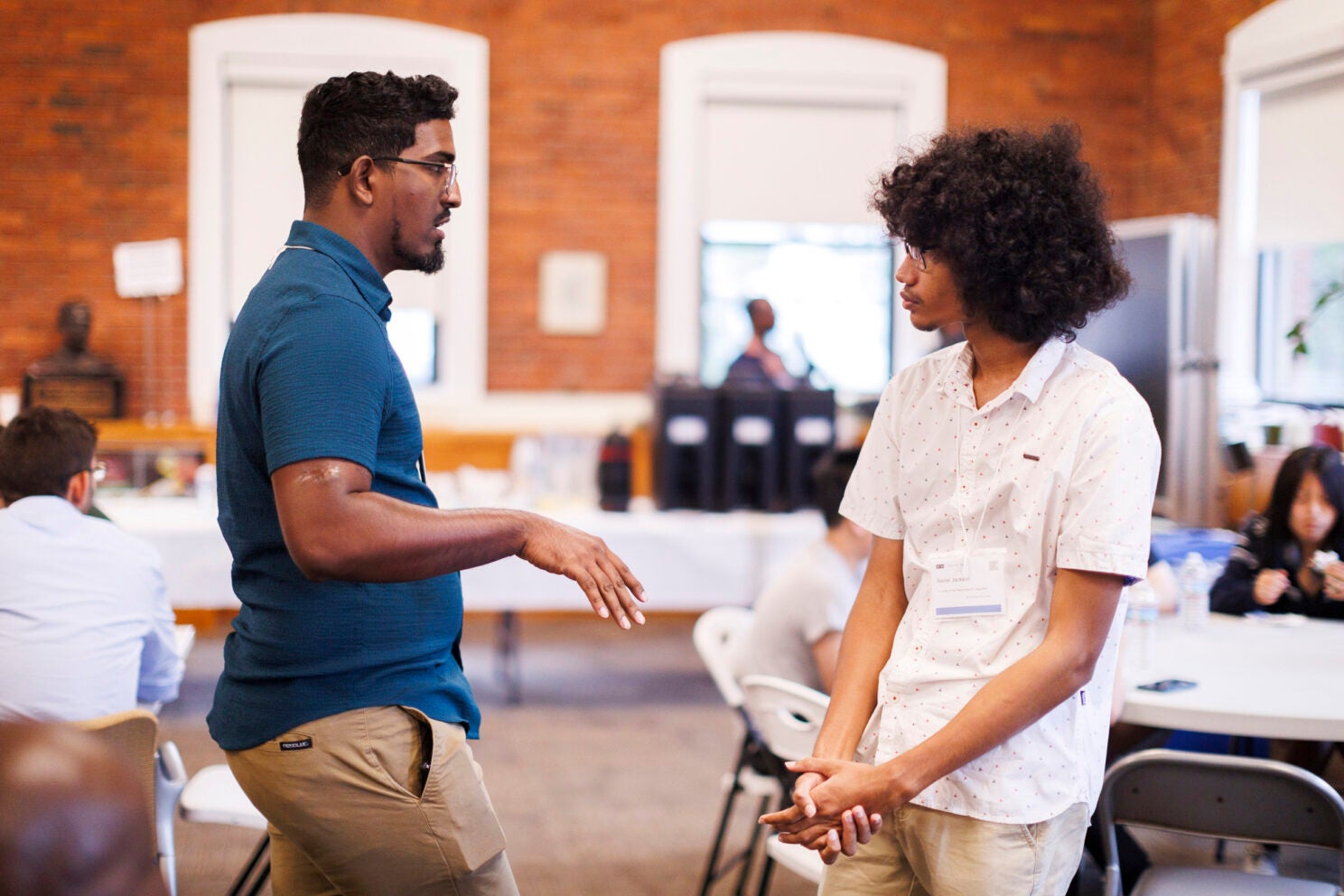
Sean Persaud (left) and Xavier Jackson, both from the University of the West Indies at St. Augustine.
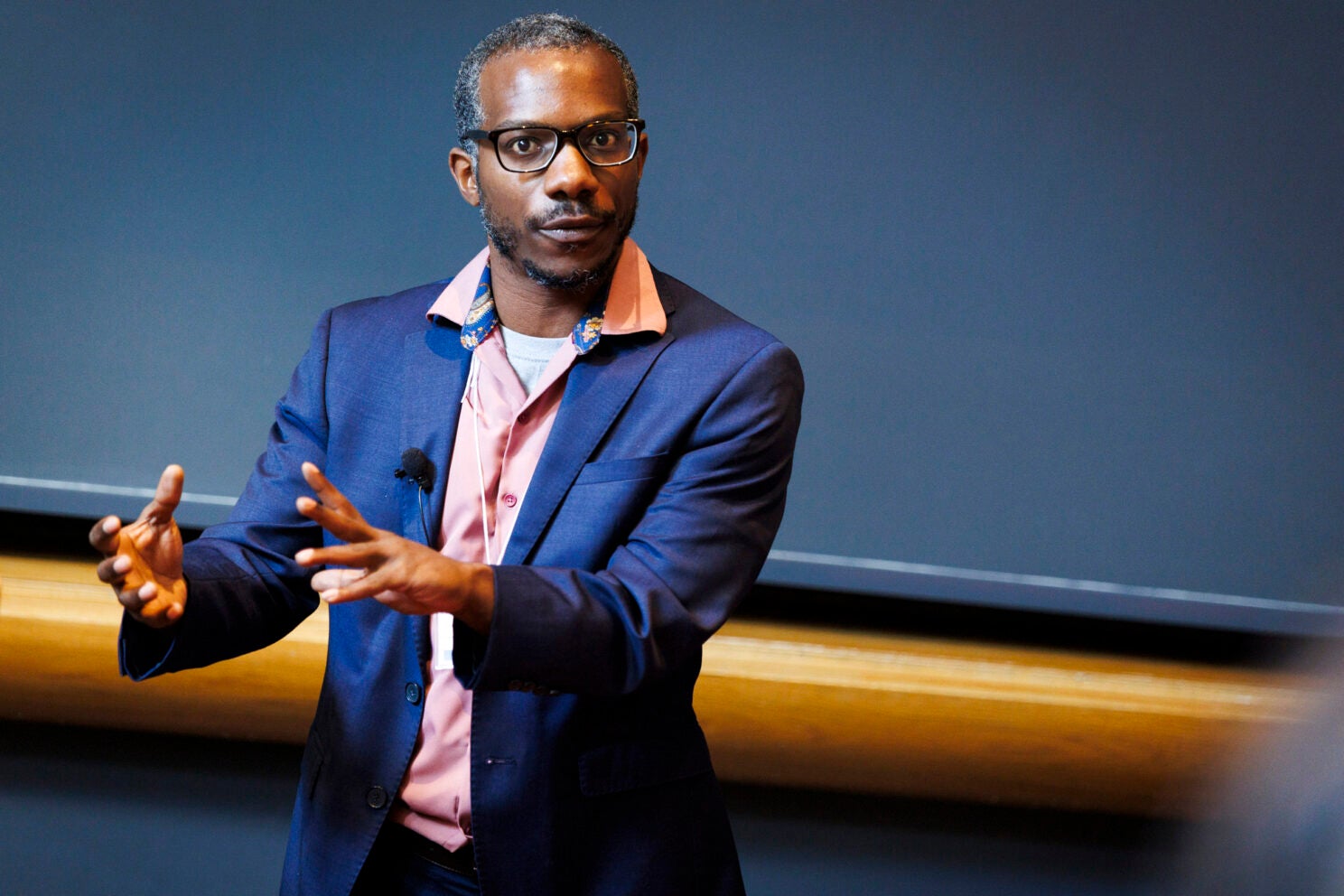
James Whitfield, Amazon Visiting Academic, Amazon Web Services.
A number of attendees hailed from historically Black colleges and universities, including undergraduates, postdoctoral researchers, and faculty from Howard University and Morehouse College. Preconference tutorials introduced the basics of quantum computing and quantum networks, and subsequent technical sessions were designed to be accessible to students or researchers without a deep background in any particular field.
Howard computer engineering major Malcolm Bogroff was one such undergraduate, with designs on graduate school but open to different directions. The rising sophomore appreciated the conference’s approach. “I think the sessions toe the line, where you can have people at the graduate student, and maybe higher undergraduate level, able to understand and ask questions,” he said.
Harvard College alumnus Makinde Ogunnaike ’17 was among those who helped students such as Bogroff get the most out of the conference. A recent Ph.D. graduate of MIT, Ogunnaike served as a student ambassador of the conference and helped co-organize networking events. Gatherings like Quantum Noir are critical to promoting exposure and community, he said.
“This conference is one of the few venues that supports Black and other underrepresented researchers both professionally and personally,” said Ogunnaike, who credited mentorship he received at the National Society of Black Physicists as an undergrad with helping him pivot from experimental particle physics to theoretical condensed matter physics.
“Just as there is a ‘hidden curriculum’ in school, where best practices and institutional resources can be hidden to people who are not familiar with elite institutions or higher education, the world of scientific research has many hidden disparities,” he said.


